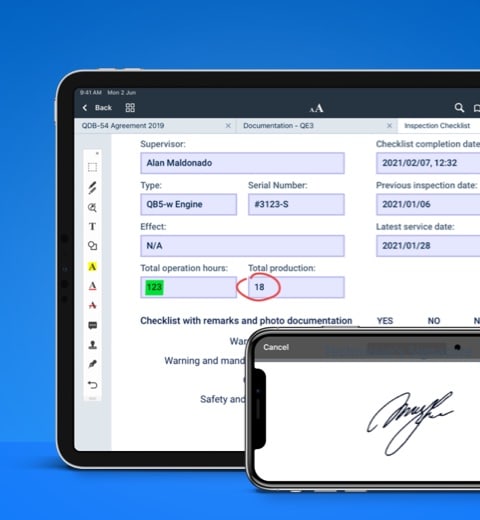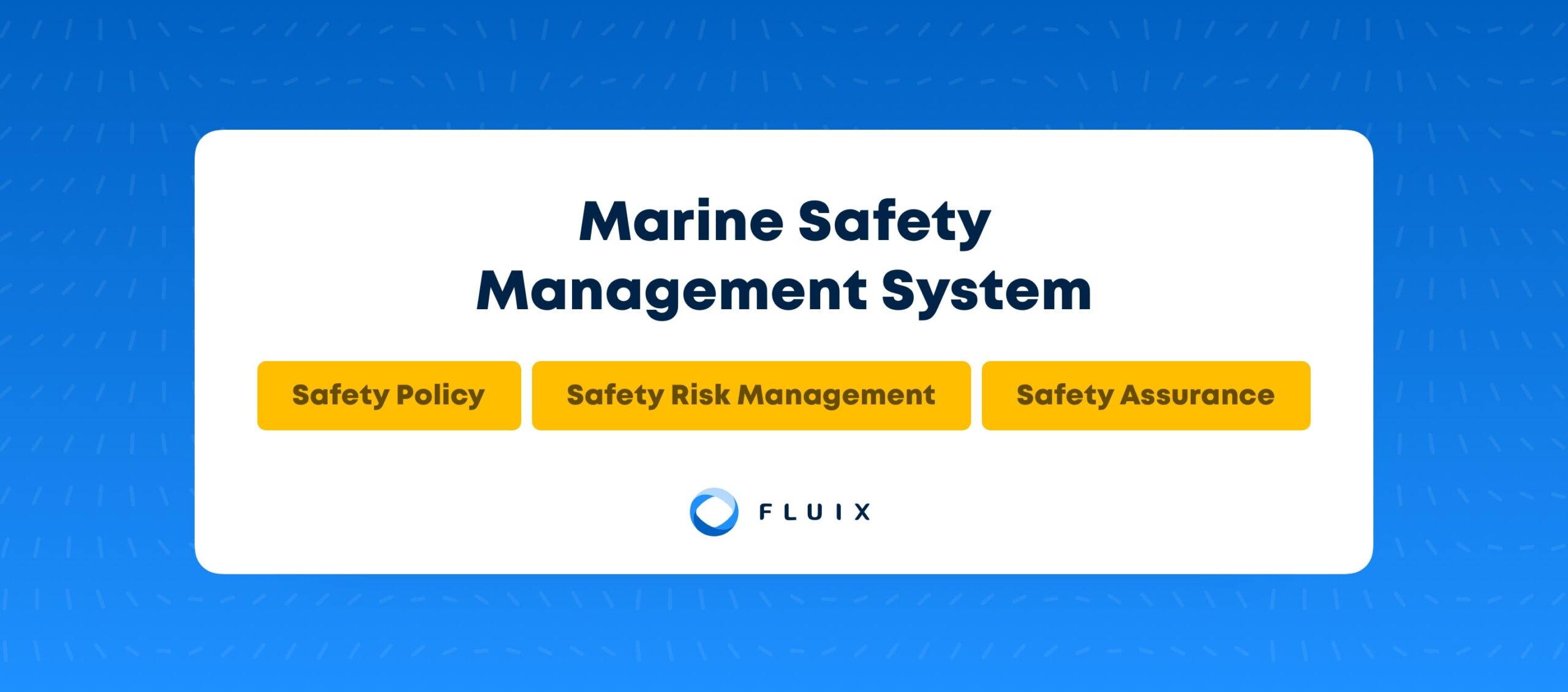Maritime operations are prone to a wide range of risks. Consequently, marine safety management systems keep your crew and passengers safe. They also protect your business from liability in the event of an accident.
Marine companies have faced increased pressure to keep passengers and vessels safe in the past few years. While vessel loss declined drastically in the past decade, actual incidents remain high and climb yearly.
What Is a Marine Safety Management System?
A marine safety management system is a set of processes and procedures maritime companies use to manage risks and improve safety. It’s similar to a safety management system for land-based operations, but this caters specifically to the marine industry.
An SMS includes three main components:
- Policies and procedures: defines how your company identifies and manages risks
- Safety management plan: outlines your company’s specific actions to reduce risks
- Safety control measures: details the procedures and processes your company will implement to prevent accidents
What Safety Risks Can Marine Safety Management Systems Help Companies Address?
Shipping vessels benefit from much better construction now than before. They have also leveraged the power of technology. However, improved SMS usage is necessary to tackle these and other risks:
- Machine or mechanical failure
- Fire and explosions
- Collisions involving other vessels or obstacles at sea
- Loss of cargo
- Passenger and worker injuries
Is There a Legal Requirement for Marine Safety Management Systems?
Around the world, each sovereign nation determines what vessels need SMS and what these safety systems should contain. In the United States, it is a legal requirement for all commercial ships owned by American entities and all foreign vessels sailing within U.S. jurisdiction. The entity that owns the vessel and its representatives can design an SMS that meets its specific needs. The type of vessel, its purpose and what it carries determines the details.
Advantages of Automated Data Collection
- Digital checklists, forms, circulars
- Instant distribution of latest versions
- Data synchronization between onboard ship and shore office


What Should You Include in the Various Sections of a Marine Safety Management System?
Some companies separate sections based on the three components identified above. Others organize the information to answer two or more components wherever possible. Review these sections and the specific information included there.
General Information
This section should include the company’s name, marine business type, location and contact information. It might also outline the marine SMS’s purpose.
SMS Review
This section includes information on how to review and audit the SMS. It creates procedures to ensure the document remains updated.
Personnel and Resources
This section should identify the marine SMS team. The team usually consists of a marine safety officer, vessel master and other senior personnel.
Responsibilities
The SMS documents the critical responsibilities of two main entities. Establishing each person’s specific duties ensures more effective management and takes a proactive approach to address potential liability issues.
Designated Person
This person’s primary task is reviewing and updating the SMS. This section should include the person’s specific roles onboard the ship and the relationship to the entity and owner.
The Master
The master’s roles can vary significantly based on whether this person shares the position with a designated person or is the only leader aboard the vessel. Here are some typical responsibilities:
- Motivating the crew members
- Ensuring compliance with safety guidelines
- Monitoring and resolving environmental concerns
- Reviewing and updating the SMS
The Company
This section details how the company supports the master and designated persons in fulfilling their roles. If neither the company nor the master or designated person owns the vessel, it should also provide information on the ship’s owner.
Safety and Environmental Policies
Marine vessels can cause disturbances in the marine environment. The SMS writer includes methods intended to reduce the effects of maritime operations here.
Procedures
The SMS details three main procedures. It shows the importance of both proactive and emergency response processes.
Operational Procedures
These procedures refer to crew members’ everyday measures to ensure safety on board. It also details who handles what tasks. Here are some operational tasks discussed in this section:
- Securing permits
- Reducing safety risks
- Reducing environmental risks
- Conducting inspections
Emergency Procedures
Safety measures do not cover all possible risks, so this section covers who becomes responsible for what in an emergency. It also details what the emergency response measures are. Examples of emergencies that need special procedures include flooding, rescues, fire and bio pollution.
Reporting Procedures
This section explains how to document and report any incidents that occur. It also details what needs to go in a report and who should receive it.
Documentation
This section details the documentation process. It also covers where to store the SMS and where to find supporting documents.
What Are Some Best Practices for Maintaining Marine SMS?
No system works so well that it can continue to do so without maintenance. These best practices can simplify the process.
Scheduled Maintenance
Designate a qualified person to review the SMS at least once a year. This person should be familiar with marine safety and environmental regulations, such as ISM code SMS guidelines. They should also have a good understanding of SMS.
Centralized Storage
Keep all documentation in one place. Doing so makes it easier to find what you need and update the SMS when necessary. It also reduces the risk of misplacing or losing documents.
Total Involvement
Involve all stakeholders in the marine SMS: everyone from the ship owners to the crew members. By involving everyone, you can better understand what works, what doesn’t work and what you need to change.
What Are the Benefits of a Marine SMS?
A marine SMS improves communication among all stakeholders. It ensures that everyone knows their roles and responsibilities. Established roles lead to more effective emergency responses by reducing confusion in high-risk situations.
Second, marine SMS plays a crucial role in protecting the delicate marine ecosystem. It compels companies to consider the environmental effects of their marine operations and take practical steps to address this.
Finally, a marine fleet management software can improve the efficiency of marine operations, especially when companies use safety management system software. Detailed instructions help mariners avoid delays and other problems. This, in turn, improves the bottom line.
At Fluix, we provide a no-code platform that crew members can use to handle inspections and digitize the SMS. Our platform provides one secure, central storage location. Contact us to get started with your digital SMS.






